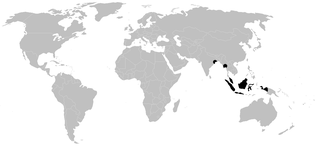
Dahlia is a genus of bushy, tuberous, herbaceous perennial plants native to Mexico. A member of the Asteraceae, dicotyledonous plants, related species include the sunflower, daisy, chrysanthemum, and zinnia. There are 42 species of dahlia, with hybrids commonly grown as garden plants. Flower forms are variable, with one head per stem; these can be as small as 5 cm (2 in) diameter or up to 30 cm (1 ft). This great variety results from dahlias being octoploids—that is, they have eight sets of homologous chromosomes, whereas most plants have only two. In addition, dahlias also contain many transposons—genetic pieces that move from place to place upon an allele—which contributes to their manifesting such great diversity.

Theodore Chaikin Sorensen was an American lawyer, writer, and presidential adviser. He was a speechwriter for President John F. Kennedy, as well as one of his closest advisers. President Kennedy once called him his "intellectual blood bank".

The sternum is the ventral portion of a segment of an arthropod thorax or abdomen.

A tergum is the dorsal ('upper') portion of an arthropod segment other than the head. The anterior edge is called the base and posterior edge is called the apex or margin. A given tergum may be divided into hardened plates or sclerites commonly referred to as tergites. For a detailed explanation of the terminology, see Kinorhynchs have tergal and sternal plates too, though seemingly not homologous with those of arthropods.

The Stylocellidae are a family of harvestmen with about 30 described species, all of which occur from India to New Guinea. Members of this family are from one to seven millimeters long. While Stylocellus species have eyes, these are absent in the other two genera.

Puccinellia is a genus of plants in the grass family, known as alkali grass or salt grass.
Ricinoides is an arthropod genus in the family Ricinoididae.
Cyclorhagida is an order of kinorhynchs, which are small marine invertebrates.
Antygomonas is a genus of cyclorhagids. It is the only genus in the family Antygomonidae Adrianov & Malakhov, 1994. Species of Antygomonas are commonly referred to as "mud dragons."
Echinoderes obtuspinosus is a species of mud dragons first found in coastal and subtidal locations around the Korean Peninsula and in the East China Sea.
Echinoderes microaperturus is a species of mud dragons first found in coastal and subtidal locations around the Korean Peninsula and in the East China Sea.
Echinoderes cernunnos is a species of mud dragons first found in coastal and subtidal locations around the Korean Peninsula and in the East China Sea.
Echinoderidae is a family of kinorhynchs in the order Cyclorhagida.
Cephalorhyncha is a genus of kinorhynchs in the family Echinoderidae.
Fissuroderes is a genus of kinorhynchs in the family Echinoderidae.
Meristoderes is a genus of kinorhynchs in the family Echinoderidae.
Cateriidae is a family of kinorhynchs in the order Cyclorhagida. It consists of a single genus, Cateria Gerlach, 1956.
Echinoderes is a genus of mud dragons first described in 1863. It is the largest genus within class Kinorhyncha. It is a highly diverse genus, with member species that inhabit "most marine benthic substrates, on latitudes ranging from the Arctic to the tropics, and from the intertidal zone down to the deep sea." Species on the east coasts of North and South America have been extensively studied by Robert P. Higgins. Species in east Asia have been extensively studied by A. V. Adrianov.






